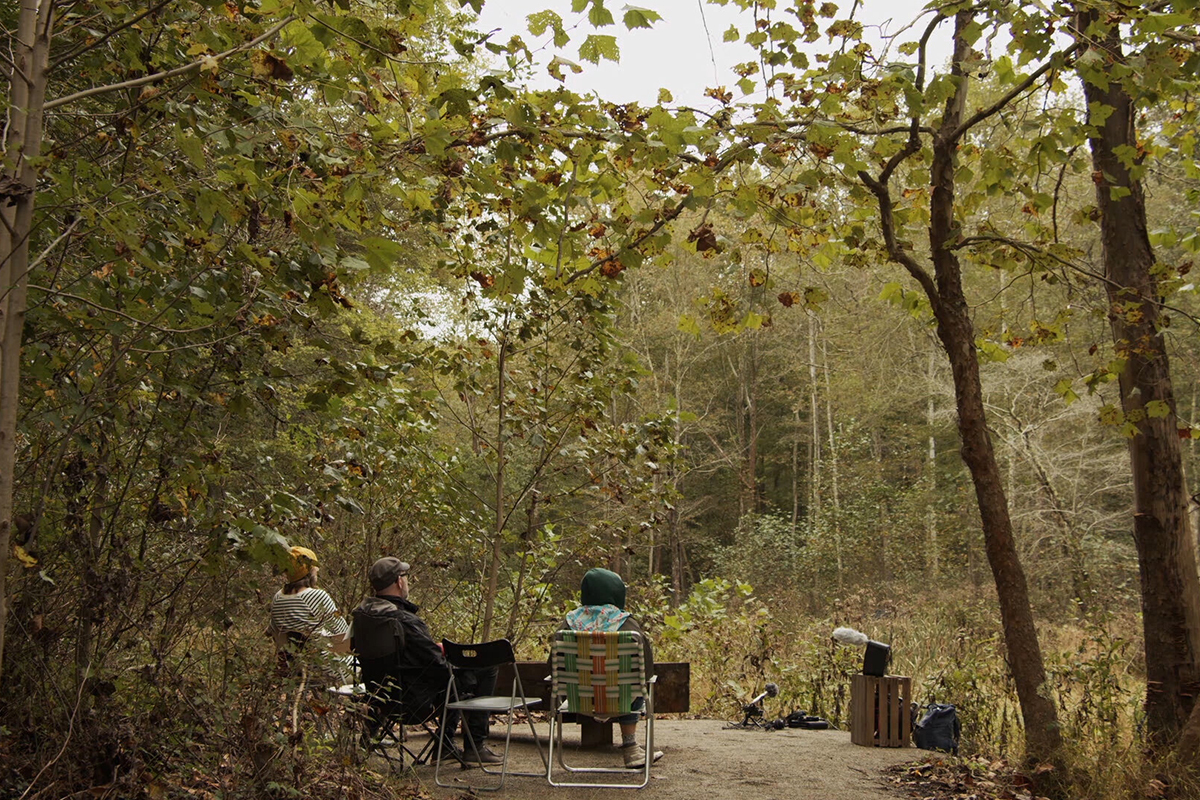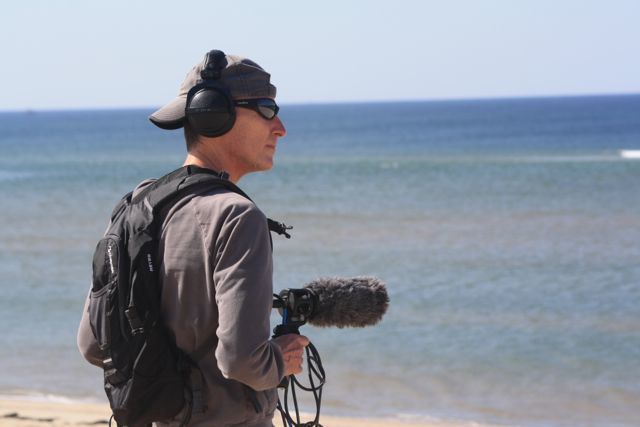If you search “forest sounds” on YouTube, you’ll find hundreds of hours of forest ambiance to help you wake up, meditate, work, sleep, or any other activity where you want to pretend you’re among the trees. But these videos could be any forest. What do our National Forests sound like? And how do they make us feel?
Luckily, a few world-class musicians and scholars have set out to create albums and auditory maps based on our National Forests. During their research and community outreach programs, they found that National Forests hold a special place in locals’ hearts and ears.

Courtesy of Brian Harnetty
Brian Harnetty is an interdisciplinary artist that uses archival material and music to create sonic compositions that reflect communities. His album Shawnee, Ohio was inspired by his family roots in the town where the Midwest meets Appalachia.
Shawnee, Ohio combines archival interviews with residents of the rural town, new musical compositions, and field recordings from the Wayne National Forest to tell the stories of past Shawnee residents and their relationship to the land around them.
“The connection between real people and an archive made, for me, archives come alive. I often think that archives contain everything except a living interaction so any way to make the objects within an archive come alive, that’s where the magic happens,” Harnetty said.
With tracks like “Jim” talking about life in Shawnee, “Boy” interviewing his grandmother about mining, and “Ina” singing local folk songs, all with Harnetty’s field recordings and instrumentation underneath, Shawnee, Ohio uses the Wayne National Forest as a venue for a dialogue around American rural life and the land we live on.

A public session of Harnetty's Forest Listening Room
While the album speaks for itself, Harnetty didn’t want the engagement with Shawnee to stop at the archives. As a part of the overall project in 2018, Harnetty and Shawnee residents went on guided walks into the Wayne National Forest and participated in what Harnetty calls Forest Listening Rooms.
“The idea is to use listening and the forest itself as a mediator to allow new kinds of conversation and connection to take place. By listening to the forest and listening to each other and then having guided conversations about land use, [we all realized] the shared interest in the land itself and its history. There’s a large labor history there … Eventually [we can] imagine the future as well and ways the forest might look in the future and how we might benefit from it and how we can protect it,” Harnetty said.
Harnetty hopes to continue the Listening Rooms once it is safe to do so. The walks consist of designated stops to sit and listen, sometimes in silence and other times with accompanying tracks from Shawnee, Ohio. Harnetty said the forest and the silence you rarely hear near so much industry allowed for those deeper conversations to take place.
“At the end of 15 or 20 minute or half an hour of silent listening, the mood dramatically changes. It feels almost giddy. … In the end, it makes it very easy to talk about ways to protect the land and to tap into those feelings of being proud about the land itself. … I really felt like the trees and the forest itself became in between us. We were listening to the forest but the forest was changing us in turn,” Harnetty said. Shawnee, Ohio utilizes musical compositions in addition to field recordings of the forest to set the scene. Musician and professor Steve Wilkes finds music in the forest alone.

Courtesy of Steve Wilkes
After a four-year Newbury Comics Fellowship to create an audio time capsule of Cape Cod called Hear Cape Cod, Massachusetts, Wilkes was the 2017 Artist in Residence at the White Mountain National Forest, where he created Hear the Forest.
Hear the Forest is an aural map of the WMNF, where visitors to the site can find audio recordings of specific, locally-cherished spots in the forest. Before Wilkes started the project, he thought the WMNF was a small part of New Hampshire. Turns out, the WMNF is 750,00 acres or 1,225 square miles.
“I was shocked at how huge the White Mountain National Forest was. I would take this for granted with some of the forests and National Parks that are out west in places like Montana or California or Washington State but I didn’t expect to be presented with a sonic canvas that was going to be this vast,” Wilkes said.
To get to the key spots in the National Forest, Wilkes had to hike and drive miles and miles during the project, chipping away at his list of spots.
As he was making the aural map, Wilkes, much like Harnetty, hosted public outreach events where he would present his project to the community. When local residents showed up, they added to the aural map’s intricacy.
“The locals came because of their own love of the National Forest and I can tell in some of the cases during my presentations that they almost considered it their civic responsibility that I knew about, for instance, Lonesome Lake. It was through these presentations that I found out about Lonesome Lake. I was completely unaware that such a place existed,” Wilkes said.

Steve Wilkes recording at the original Marconi site in Wellfleet on Cape Cod
Wilkes has synesthesia, a neurological condition where he sees colors associated with sound frequencies, and he said going into the forest and hearing wildlife and streams was an overwhelming sonic experience.
For both Wilkes and Harnetty, the forest changed their relationship to music. Harnetty said when listening to the forest, there’s no climax like there is in classical music. Sounds come and go at their own pace, encouraging him to follow these rhythms. For Wilkes, his aural map projects changed his root definition of a musician.
“As I was coming of age and then ultimately growing into being a professional musician, I would have defined musicians as people who perform on instruments or who sing professionally or who write compositions but [Hear the Forest and Hear Cape Cod] have made me realize that I was far too narrow … A musician is anybody, any human being, who can listen to the world around them in a musical way.”
Links to the mentioned albums and projects can be found below:
http://www.brianharnetty.com/recordings-1#/shawnee-ohio/

